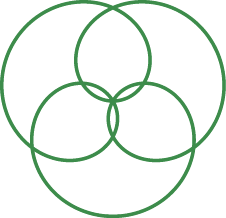
r=sin(3θ/5)
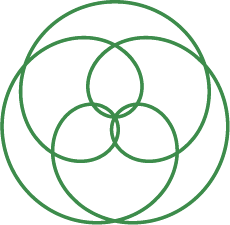
r=sin(3θ/7)
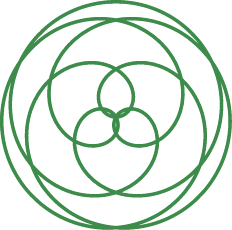
r=sin(3θ/11)
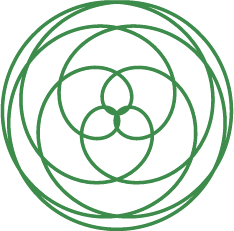
r=sin(3θ/13)
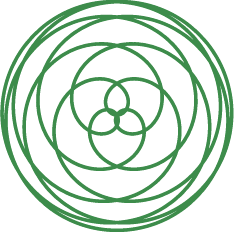
r=sin(3θ/17)
[ Models | Lore | Sources | Inspiration ]
Nurgle's symbol consists of three circles arranged in a triangular layout. There are a huge number of variations on this root theme, embellishing and decorating the core structure in endless ways, but the key symbol endures.
Some relationships between Nurgle's symbol and sacred number:
The symbol is not unique to Nurgle; it's such a basic concept (which can be conveyed as simply as three dots) that it appears in a wide range of other roles as well. This page documents some of these for your edification and inspiration.
 r=sin(3θ/5) |  r=sin(3θ/7) |  r=sin(3θ/11) |  r=sin(3θ/13) |  r=sin(3θ/17) |
These roses are formed by plotting the given equations in polar coordinates. They are centred at the origin and tangential to the unit circle. Any equations of the form r=sin(3θ/n) will give a similar shape, where n is an odd number that is coprime with 3. As n increases, the number of layers of ring increases.
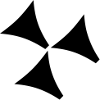 Sumerian: kur | 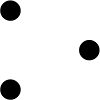 Brahmi: i | 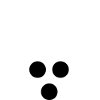 Hebrew: segol | 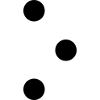 Tifinagh: yak | 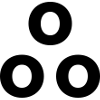 Tamil: akh | 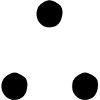 therefore |
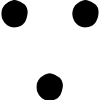 because | 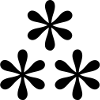 asterism | 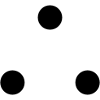 Japanese maps: historic site | 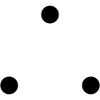 Japanese maps: tea plantation | 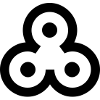 N'Ko: gbakurunen | 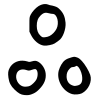 Toki Pona: kulupu |
Some of the special characters from unusual scripts may not render correctly on your browser if you do not have appropriate support for them. They are all reproduced as images above though, so that they are correctly visually represented.
Some examples of coats of arms with three roundels (circles) or annulets (rings) in a triangle are shown above. There are others beyond these, and the symbol is used as a detail in the shields of many more.
The symbolism of heraldry can often be obscure. One notable characteristic is that bezants (yellow circles) represent gold coins and thus are indicative of wealth.
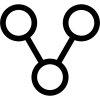 aqua vitae | 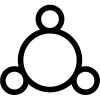 silver | 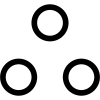 oil | 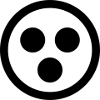 caput mortuum | 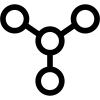 horse dung |
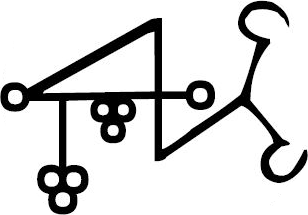 |
Demonic SigilsAppearing in the sigil of the Great Earl and President of Hell, Morax, as depicted in the Ars Goetia, one of the books of the 17th century demonological grimoire The Lesser Key of Solomon. Morax is sourced from the earlier Pseudomonarchia Daemonum that was an appendix to the 16th century De praestigiis daemonum, which was a point-by-point rebuttal to the infamous Malleus Maleficarum. |
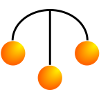 pawnbroker |  Banner of Peace | 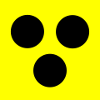 Austria: blindness | 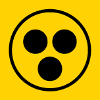 Sweden: deafness | 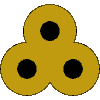 Splinter's mon |
| Pnictogen Hydrides (pyramidal) | |||||||||
|---|---|---|---|---|---|---|---|---|---|
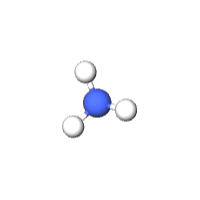 ammonia (NH3) | 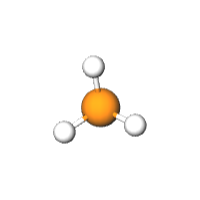 phosphine (PH3) | 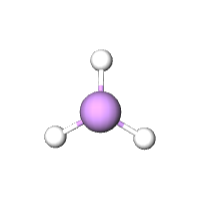 arsine (AsH3) | 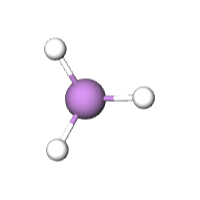 stibine (SbH3) | 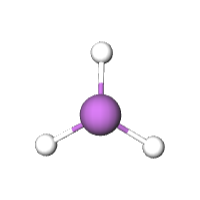 bismuthine (BiH3) | |||||
| Pnictogen Trihalides (pyramidal) | |||||||||
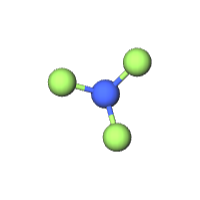 nitrogen trifluoride (NF3) | 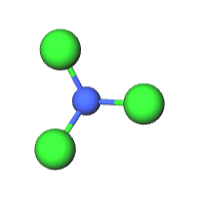 nitrogen trichloride (NCl3) | 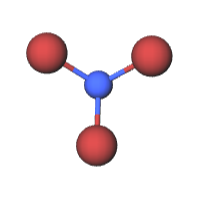 nitrogen tribromide (NBr3) | 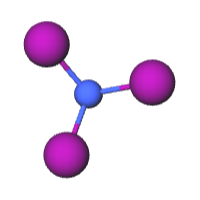 nitrogen triiodide (NI3) | ||||||
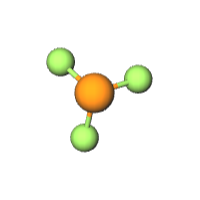 phosphorus trifluoride (PF3) | 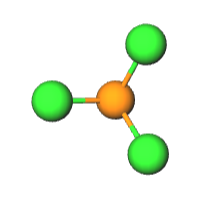 phosphorus trichloride (PCl3) | 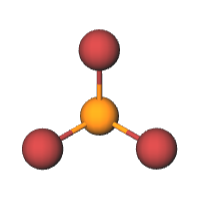 phosphorus tribromide (PBr3) | 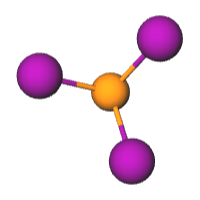 phosphorus triiodide (PI3) | ||||||
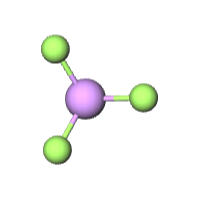 arsenic trifluoride (AsF3) | 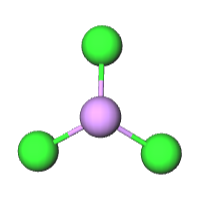 arsenic trichloride (AsCl3) | 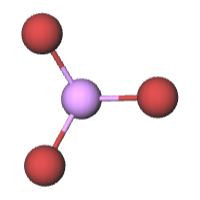 arsenic tribromide (AsBr3) | 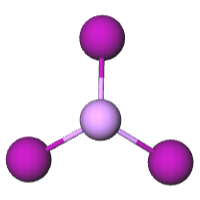 arsenic triiodide (AsI3) | ||||||
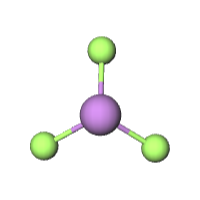 antimony trifluoride (SbF3) | 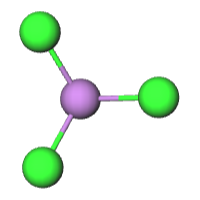 antimony trichloride (SbCl3) | 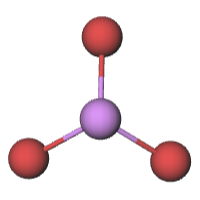 antimony tribromide (SbBr3) | 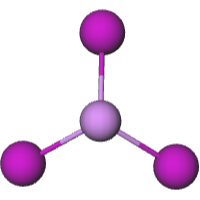 antimony triiodide (SbI3) | ||||||
| Borane and Boron Trihalides (planar) | |||||||||
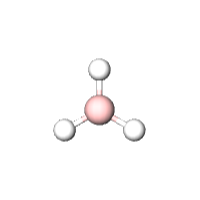 borane (BH3) | 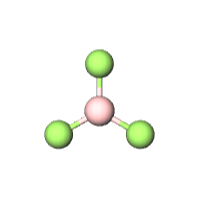 boron trifluoride (BF3) | 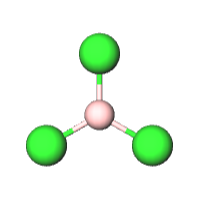 boron trichloride (BCl3) | 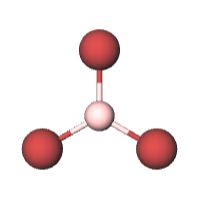 boron tribromide (BBr3) | 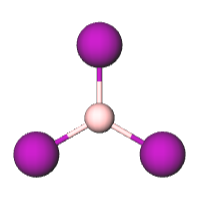 boron triiodide (BI3) | |||||
| Chalcogen Trioxides (planar) | |||||||||
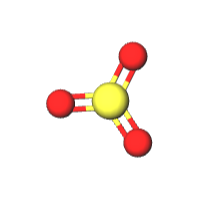 sulphur trioxide (SO3) | 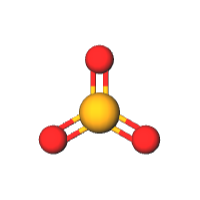 selenium trioxide (SeO3) | 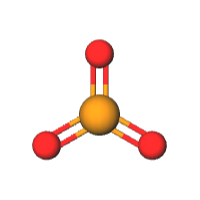 tellurium trioxide (TeO3) | |||||||
| Aerogen Trioxides (pyramidal) | |||||||||
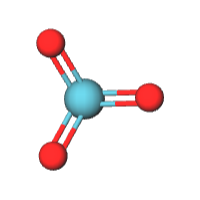 xenon trioxide (XeO3) | 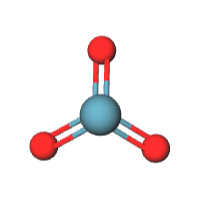 radon trioxide (RnO3) | ||||||||
There are several covalently-bonded inorganic molecules with a trigonal structure that is either pyramidal or planar, as listed above. Others (such as PoO3) may be possible, mostly through artificial means. In the table above, click on the image to be taken to the chemical's entry at the PubChem Project (where it exists), and click on the text to be taken to the relevant Wikipedia page.
Of the few homonuclear triatomic molecules, only triatomic hydrogen (H3) has an equilateral structure, and that is only theoretical (the molecule decomposes in under a millionth of a second).
Additionally, there are several ions with a trigonal structure, including: trihydrogen (H3+), carbonate (CO32-), nitrate (NO3-), chlorate (ClO3-), and sulphite (SO32-).
Beyond boron, heavier elements in the icosagen family form polymers or lattices in their hydride and trihalide compounds, and so are not in the scope of this list. Some other molecules with a central element bonded to three orbiting elements (like ClF3) are excluded because they are t-shaped, and thus do not exhibit order-3 rotational symmetry.
For a discussion on the possible real chemical compound underlying a fictional chemical weapon from the Warhammer 40,000 background, see: TP-III (Trimethyline-Phthaloxyic-Tertius).
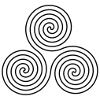 triple spiral | 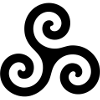 triskelion | 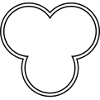 trefoil | 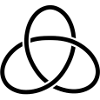 trefoil knot | 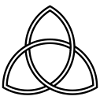 triquetra | 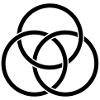 Borromean rings |
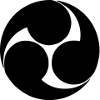 Hidari Gomon | 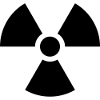 ionising radiation | 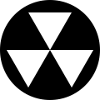 fallout shelter | 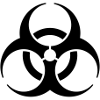 biohazard | 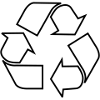 recycling | 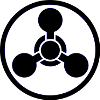 chemical weapon |
There are also many trifoliate plants (having leaves divided into three leaflets), including the entirety of the Trifolieae tribe.
| Inspiration | |
| Warhammer Setting | The Dark Tongue; Daemonic Names; Lexicon; Short Stories; Cut-ups; Cool Stuff |
| Art | Golden Demon; Nurglesque Music |
| Speculation | Chaos God Correspondence; Dark Heresy Backgrounds; Sevenfold Path; Sevenrot; Seven Deadly Sins |
| Real World References | Nergal in Mesopotamian History; Symbolism of Three Circles; Symbolism of Seven |